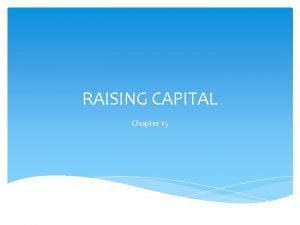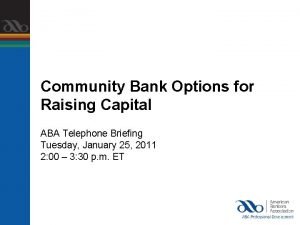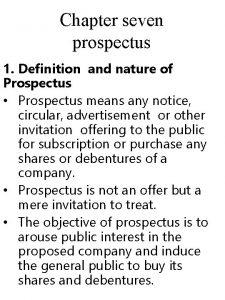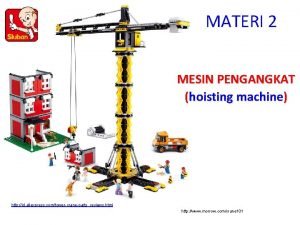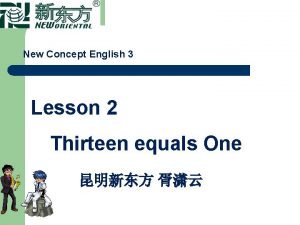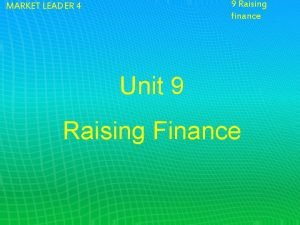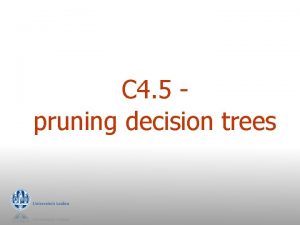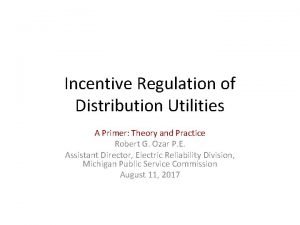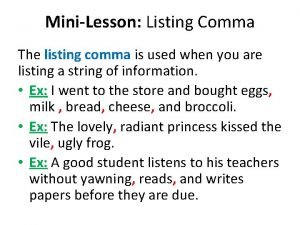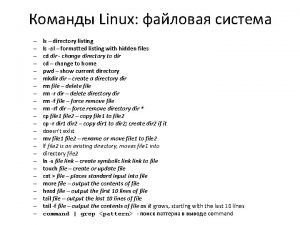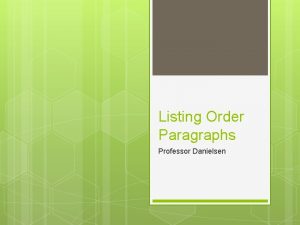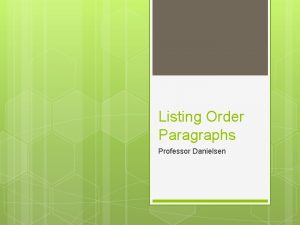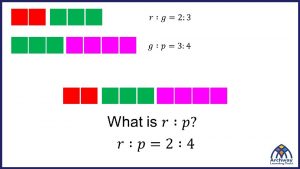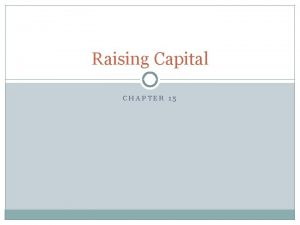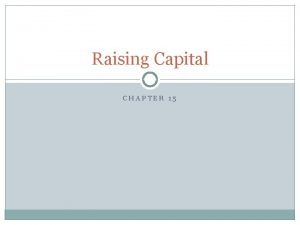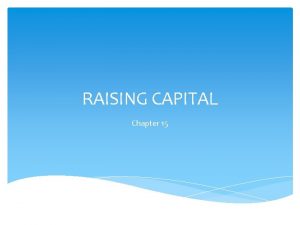Raising Capital in the EU Prospectus and Listing






























































- Slides: 62

Raising Capital in the EU: Prospectus and Listing Regimes 23 September 2016

2 Do we need mandatory disclosure? • Asymmetric information entails moral hazard and adverse selection problems (market for lemons) • Excessive cost of (debt and equity) capital may squeeze out the best undertakings • Can issuers credibly commit to provide reliable information? • Positive vs negative information • Incomplete contracts and ex-post strategic behaviours • Economies of scale in monitoring information

3 The law of unintended consequences • Open question: to whom are prospectuses beneficial nowadays? • In principle, prospectuses are addressed to retail investors • However, the size and complexity of the information required is unlikely to match small investors’ needs • Is the disclosure paradigm still reliable? • Are prospectuses rather serving issuers’ (and competent authorities’) need to constrain legal liability for lack of complete information?

The EU prospectus framework: rationale The evolution of the prospectus directive regime: • Listing Particulars Directive (Dir. 80/390/EEC) • • For admission to official listing and IPOs • No mutual recognition; coordination among authorities Public Offers Directive (Dir. 89/298/EEC) • • Mutual recognition only for simultaneous offers • The new Prospectus Regime • The Prospectus Directive (Dir. 2003/71/EC) (PD) • Harmonization and ESMA (consolidated into PD) • Omnibus Directive (Dir. 2010/78/EU) • Dir. 2014/51/EU

The Lamfalussy Structure L 1 Legislation Council Commission ESC L 2 Implementing EBC 1 details L 3 Guidelines 1 CEBS 2 L 4 Enforcement EBC = European Banking Committee CESR 3 Parliament EIOPC 1 CEIOPS 3 Commission ESC = European Securities Committee EIOPC = European Insurance and Occupational Pensions Committee CEBS = Committee of European Banking Supervisors CESR = Committee of European Securities Regulators CEIOPS = Committee of European Insurance and Occupational Pensions Supervisors ¹ Finance ministries ² Supervisors and Central Banks ³ Supervisors IIMG SUPERVISION 5

The EU ESAs supervisory structure European Systemic Risk Board (ESRB) Macroprudential supervision General Board • ECB President and vice-President • Governors of national central banks • a Member of the European Commission • Chairpersons of the three European Supervisory Authorities • Chairs and the two vice-Chairs of the Advisory Scientific Committee • Chair of the Advisory Technical Committee Micro-prudential information + Members of the General Board without voting rights: • Representatives of national supervisors • President of the Economic and Financial Committee Macro-prudential information, early risk warnings and recommendations to supervisors European Supervisory Authorities (ESAs) Microprudential supervision SSM + European Banking Authority (EBA) European Insurance and Occupational Pensions Authority (EIOPA) European Securities and Markets Authority (ESMA) 6

Wrapping it up… Act TFUE Lamfalussy level Delegated acts Art. 290 2 Commission Draft measure Final adoptions Commission Implementing acts Art. 291 2 Commission (Comitology Commission Reg. 182/2011) Regulatory Technical Standards (RTS) Art. 290 2+ ESMA Commission Implementing Technical Standards (ITS) Art. 291 2+ ESMA Commission Guidelines and Recommend. [Art. 263] 3 ESMA

When is a prospectus mandated? 1. Public offer of securities 2. Admission of securities to trading on regulated market • The two regimes are similar … • Documents to be filed largely coincident • Overlapping legal regime for supplements and withdrawal • … yet not identical • Exemption regimes

«Securities» • “Transferable securities”: securities negotiable on the capital market, such as: • shares in companies and other securities equivalent to shares in companies, partnerships or other entities • and depositary receipts in respect of shares • bonds or other forms of securitised debt • including depositary receipts in respect of such securities • other securities giving the right to acquire or sell any such transferable securities or giving rise to a cash settlement determined by reference to transferable securities

«Securities» For the purpose of the PD, the following are not securities: • money market instruments (treasury bills, certificates of deposit and commercial papers) with a maturity of less than 12 months • instruments of payment

11 An apparent conundrum • Art. 1(2)(h) excludes from PD securities included in an offer where the total consideration in the Union is less than EUR 5, 000, calculated over 12 months • Art. 3(2)(e) excludes offers of securities with a total consideration in the Union of less than EUR 100, 000, calculated over 12 months

12 The Prospectus Directive legal framework • Scope of application (and inapplicability) • Art. 1 PD • PD does not apply no harmonisation; MS freedom to set rules; no passport applies to national documents, but passport allowed for opt-in at issuers’/offerors’ discretion (Art 1(3)) • Exemptions • Arts 3 and 4 PD • PD applies MS are prevented form requiring issuers/offerors to draw a prospectus; no prospectuss needed for xborder funding/listing

13 Inapplicability The following are not covered by the PD • Units of open-ended funds (UCITS disclosure applies here) • Securities issued by non-profit firms (if issued to collect funds for non-profit activities) • Non-equity securities issued in a continuous or repeated manner by credit institutions provided that these securities are not subordinated, convertible or exchangeable and materialise reception of repayable deposits covered by a guarantee scheme • Non-equity securities issued in a continuous or repeated manner by credit institutions provided that the total consideration EU-wide is less than EUR 75, 000 and these securities are not subordinated nor convertible and do not incorporate an option

«Public offer» • A communication to persons in any form and by any means • Shall this be a contractual offer? Leeway to MSs, national rules differ • Presenting sufficient information on the terms of the offer and the securities to be offered • Regulating through definitions? What if the information is not sufficient? • Regarded as legal basis to exclude trading book offers • So as to enable an investor to decide to purchase or subscribe to these securities • There is no offer if you cannot say “no, thanks” securities exchanges carried out through collective action clauses (consent solicitation in debt restructurings)

Retail cascade • Typically occurs when securities are sold to investors (other than qualified investors) by intermediaries and not directly by issuers • Selling pressure; access to (potential) investors’ identity (but see the regime on the circulation of customers’ information) • The definition of “public offer” also applies to the placing of securities through financial intermediaries • Art 1(2), subparas 2 and 3: ‒ when an exemption applies to an offer (e. g. for professional investors: see below), subsequent resales shall be regarded as a separate offer, and the general definition applies for the purpose of deciding whether an offer occurs ‒ Securities placement through financial intermediaries subject to prospectus, if no exemption applies for the final placement

Retail cascade • Financial intermediaries placing or subsequently reselling the securities are entitled to rely upon the initial prospectus published by the issuer or the offeror as long as: • this is valid and duly supplemented, and • the issuer or the offeror responsible for drawing up such prospectus consents to its use • In case the issuer or the offeror responsible for drawing up such initial prospectus does not consent to its use, the financial intermediary should be required to publish a new prospectus • In such a case, the financial intermediary can normally use the initial prospectus by incorporating the relevant parts by reference into its new prospectus.

Public offers: general exemptions 1. Offer of securities addressed solely to qualified investors • “Qualified investors” are defined by reference to Mi. FID = professional investors either by default (a), unless opt-out, or upon request (opt-in) (b) a) Entities required to be authorised or regulated to operate in the financial markets (e. g. , banks, investment firms, insurance companies, collective investment schemes and their management companies, pension funds); national and regional governments; SPVs b) Customers opting in (if 2 out of three requirements are met): • the client has carried out transactions, in significant size, on the relevant market at an average frequency of 10 per quarter over the previous four quarters, • client's financial instrument portfolio exceeds EUR 500, 000, • the client has worked in the financial sector for at least one year in a professional position, which requires knowledge of the transactions or services envisaged.

Public offers: general exemptions 2. Offer of securities addressed to fewer than 150 natural or legal persons per MS, other than qualified investors; 3. Offer of securities addressed to investors who acquire securities for a total consideration of at least EUR 100, 000 per investor, for each separate offer; 4. Offer of securities whose denomination per unit amounts to at least EUR 100, 000; 5. And, as we already know, offer of securities with a total consideration in the Union of less than EUR 100, 000, which shall be calculated over a period of 12 months

Public offers: specific exemptions Provided that a document is available containing information which is regarded by the competent authority as being equivalent to that of the prospectus: 1. securities offered in connection with a takeover by means of an exchange offer; 2. securities offered, allotted or to be allotted in connection with a merger or division; 3. dividends paid out to existing shareholders in the form of shares of the same class as the shares in respect of which such dividends are paid; 4. securities offered, allotted or to be allotted to existing or former directors or employees by their employer or by an affiliated undertaking

Admission to trading • Art 3(3) PD: “Member States shall ensure that any admission of securities to trading on a regulated market situated […] within their territories is subject to the publication of a prospectus” • Regulated market Mi. FID framework • Admission of securities to trading • no formal definition in EU law • possibility that securities are negotiated in a trading venue, at the outcome of a positive assessment by the trading venue • May be distinguished from listing • Regulated markets > stock exchanges • Official listing may precede admission to trading • Listing always requires issuers’ agreement; trading does not

Listing Directive (2001/34/EC) • The Listing Directive sets out the requirements securities and their issuers shall comply with to be admitted to official listing • For shares (Arts 42 ff LD): • Foreseeable market cap at least 1, 000 euro – unless an adequate market can be established nevertheless • Three previous financial reports – unless MS deem investors are properly informed nevertheless • Shares must be freely negotiable (shares not fully paid-up only if the public is properly informed) • Sufficently distributed among the public (float), unless distribution takes palce through the stock exchange

Listing Directive (2001/34/EC) • For bonds (Arts 53 ff LD): • Debt scurities must be freely negotiable • All debt securities ranking pari passu shall be the object of the application for admission to official listing • Amount of loan not less than 200, 000 euro – unless an adequate market can be established nevertheless

23 Listing rules of regulated markets • As private undertakings, market operators can set own entry standards for the regulated markets they manage (listing function) • Art. 12 LD: admission of securities to official listing may be made more stringent by “competent authorities” (incl. stock exchanges operators) • Recital 15 PD: MS or a competent authority or an exchange through its rule book may impose other particular requirements in the context of admission to trading of securities on a regulated market (notably regarding corporate governance)

Admission to trading: PD exemptions 1. Same set of exemptions from offering prospectus requiring and equivalent document a) takeover by means of an exchange offer; b) merger or division; dividends paid out to existing shareholders in the form of shares; d) securities offered to directors or employees c) 2. Shares representing, over a period of 12 months, less than 10% of the shares already admitted to trading on the same regulated market [post-IPO capital increases] 3. Securities already admitted to trading on another regulated market, if: a) b) c) those securities have been admitted to trading for more than 18 months; a prospectus was published at the time of the IPO; a summary document is made available to the public also stating where the most recent prospectus and the financial statements are available

The prospectus: contents Art 5 PD: “The prospectus shall contain all information which, according to the particular nature of the issuer and of the securities offered to the public or admitted to trading on a regulated market, is necessary to enable investors to make an informed assessment of the assets and liabilities, financial position, profit and losses, and prospects of the issuer and of any guarantor, and of the rights attaching to such securities. This information shall be presented in an easily analysable and comprehensible form. ”

The prospectus: contents • “Level 2” Regulation (EC) No 809/2004 (PR) • Specifies the information items the prospectus shall include • Organization of the information items: • Schedules: lists of minimum information requirements adapted to the particular nature of the different types of issuers and/or the different securities involved; • Building blocks: lists of additional information requirements to be added to one or more schedules depending on the type of instrument and/or transaction for which a prospectus is drawn up • Recital 5 PR: issuers can add extra information

Omission of information 27 • The competent authority may authorise the omission of certain information if: • disclosure would be contrary to the public interest; or • disclosure would be seriously detrimental to the issuer, provided that the omission would not be likely to mislead the public with regard to facts and circumstances essential for an informed assessment; or • it is of minor importance • Where certain information required is inappropriate to the issuer's sphere of activity or legal form, the prospectus shall contain equivalent information equivalent, if any • Where securities are guaranteed by a Member State, the prospectus may omit information about such guarantor.

The prospectus: structure Art 5(3) PD and Art 25 PR 1. Single Document 2. Separate documents Only for non-equity securities, when issued under an offering program (i. e. , on a continuous or repeated manner) (1) and (2) can be structured as a base prospectus

Single document • The prospectus drafted as a single document is composed of the following parts in the following order: 1. a clear and detailed table of contents 2. the summary (including the key information) 3. the risk factors linked to the issuer and the type of security covered by the issue 4. the other information items included in the relevant schedules

The tripartite document 30 Summary • Key information Registration document • Table of contents • Risk factors • Inform. items on issuer (sched. and build. blocks) Securities note • Table of contents • Risk factors • Inform. items on securities (sched. and build. blocks)

Summary: key information Essential and appropriately structured information which is to be provided to investors with a view to enabling them to understand the nature and the risks of the issuer and the securities offered or admitted to trading on a regulated market and to decide which offers of securities to consider further. The key information shall include: • a short description of the risks associated with and essential characteristics of the issuer, including the assets, liabilities and financial position; • a short description of the risk associated with and essential characteristics of the investment in the relevant security, including any rights attaching to the securities; • general terms of the offer, including estimated expenses charged to the investor by the issuer or the offeror; • details of the admission to trading; • reasons for the offer and use of proceeds.

Summary: warnings The summary shall also contain a warning that: a) it should be read as an introduction to the prospectus; b) any decision to invest in the securities should be based on consideration of the prospectus as a whole by the investor; c) where a claim relating to the information contained in a prospectus is brought before a court, the plaintiff investor might, under the national legislation of the Member States, have to bear the costs of translating the prospectus before the legal proceedings are initiated; • The jurisdiction regime for prospectus liability under Brussels Ia (Reg. 1215/202) – ECJ Kronhofer, Kolassa, Universal Music a) civil liability attaches to those persons who have tabled the summary, but only if the summary is misleading, inaccurate or inconsistent when read together with the rest of the prospectus.

Summary: contents The content of the summary as per Annex XXII PR : a) Introduction and warnings b) Issuer and guarantor (of any) (e. g. major shareholders, selected financial information, recent trends) c) Securities (rights attached to securities, derivative elements, dividend policy, interest rate) d) Risk factors (for issuer and securities) e) Offer (costs, reasons for the offer, destination of proceedings)

Base prospectus • Allows issuers/offerors to postpone publication of some information at the moment of the offer, in a separate document (final terms) a) ‘Category A’: the relevant information which shall be included in the base prospectus. This information cannot be left in blank for later insertion in the final terms; b) ‘Category B’: the base prospectus shall include the general principles related to the information required, and only the details which are unknown at the time of the approval of the base prospectus can be left in blank for later insertion in the final terms; c) ‘Category C’ means that the base prospectus may contain a reserved space for later insertion for the information unknown at the time of the approval of the base prospectus. Such information shall be inserted in the final terms

More limited flexibility in other cases • Where the final offer price and amount of securities which will be offered to the public cannot be included in the prospectus: • the criteria, and/or the conditions in accordance with which the above elements will be determined or, in the case of price, the maximum price, are disclosed in the prospectus; or • the acceptances of the purchase or subscription of securities may be withdrawn for not less than two working days after the final offer price and amount of securities which will be offered to the public have been filed. • The final offer price and amount of securities shall be filed with the competent authority of the home Member State and published in accordance with the general rules

36 Incorporation by reference • Prospectuses may incorporate information by reference to one or more previously or simultaneously published documents that have been approved by the competent authority of the home Member State or filed with it in accordance with this Directive or Directive 2004/109/EC • Annual and semi-annual reports (quarterly if provided for) • Other prospectuses (if still up to date) • Such information shall be the most recent available • The summary shall not incorporate information by reference. • Cross-reference list must be provided in order to enable investors to identify easily specific items of information

Civil liability • Art. 6 PD : responsibility for the information given in a prospectus attaches at least to: • the issuer or its administrative, management, supervisory bodies • Circularity vs absence of a deep pocket • the offeror, the person asking for the admission to trading on a regulated market • the guarantor • The persons responsible shall be clearly identified

Civil liability • Declarations are required by them that, to the best of their knowledge, the information contained in the prospectus is in accordance with the facts and that the prospectus makes no omission likely to affect its import • However, no civil liability shall attach to any person solely on the basis of the summary, unless it is misleading, inaccurate or inconsistent, when read together with the other parts of the prospectus, or it does not provide, when read together with the other parts of the prospectus, key information

Competent authority: approval • Before publication, prospectuses must be approved – after vetting – by the home competent authority (Art 13 PD) • The scrutiny addresses the completeness of the prospectus including the consistency of the information given and its comprehensibility

Competent authority: approval • NCAs shall approve or refuse within 10 working days of the submission of the draft prospectus (no tacit approval) • 20 working days if public offer involving securities issued by an issuer with no securities admitted to trading on a regulated market and who has not previously offered securities to the public • If the competent authority finds, on reasonable grounds, that the documents are incomplete or that supplementary information is needed, the time limits runs again from the date on which such information is provided • Does this allow addition of items not provided for by PR? • Art 3(3) RP: info may be integrated “for each of the items”

Approval procedure: RTS • RTS (Level “ 2+”) setting out the approval procedure • All drafts of the prospectus to be submitted in searchable electronic format via electronic means to the competent authority. Authorities specify contact points • Subsequent version in track-change and explaining how they address the authority’s requests • Issuer/offeror shall specify: • which information items are not applicable, and reasons for request of omissions • Cross-references in case the order of the items does not follow that provided into L 2 Regulation (809/2004) • Info incorporated by reference, unless already • Request for notifications in case of cross-border operations

Approval procedure: RTS • The authority shall acknowledge receipt of the initial application in writing via electronic means no later than by close of business on the second working day following the receipt. The date of acknowledgement shall not affect the date of submission of the draft prospectus, from which the time limits for notifications commence. • Requests of modification or integration via electronic means; orally if minor importance and no interruption of terms. • Authority shall notify the issuer of its decision regarding the approval of the prospectus in writing, via electronic means, on the day of the decision. Refusal requires reasons.

Competent authority: issuer choice • Conflict-of-law harmonization (Art. 2(1)(m) PD) • Equity and non-equity < EUR 1, 000 • Non-equity > EUR 1, 000 • Third countries • Administrative competence determines substantive law (supervisors do not administer foreign law)

Maximum harmonization, but remaining incentives for arbitrage • Liability regimes for false/misleading statements remains national (Art. 6 PD) • Remaining national variations in supervisory practice (approval; public enforcement) • PR information items defined in broad terms (“risk factors”) leave room for uneven disclosure levels • Peer review ESMA remains a week tool • New RTS on prospectus approval not decisive

Regulatory arbitrage in equity markets (i) • Reincorporating (registered office) in the country of prospectus approval (2005/56/EC; ECJ Vale) • e. g. Air Berlin PLC (+) no need to add layers in corporate group structure (–) might not always be available (country of prospectus approval may not allow it: arg. ex ECJ Cartesio) (–) changing company law comes at a cost: net effect may not always be positive

Regulatory arbitrage in equity markets (ii) • Listing a holding company newly-incorporated in the country of prospectus approval • e. g. D’Amico Shipping SA (+) no need to change company law applicable to operating company (–) complicates group governance as the operating company remains unlisted

Regulatory arbitrage in equity markets (iii) • Offering depository receipts (+) cheap (–) only valid for prospectus; not for transparency (–) adds a further layer in the holding structure (depositary bank formal shareholder)

Publication • Once approved, the prospectus shall be made available to the public at the latest at the beginning of the offer to the public or the admission to trading. In case of an IPO, the prospectus shall be available at least six working days before the end of the offer. • Publication techniques (+ notice at MSs’ discretion): a) by insertion in one or more newspapers (mandatory for notice); or • RTS: general or financial information newspaper having national or supra-regional scope. If the competent authority believes the newspaper chosen does not comply with the requirement it shall determine an appropriate newspaper taking into account the geographic area, number of inhabitants and reading habits b) printed form free of charge at the offices of the regulated market or at the registered office of the issuer and at the offices of the financial intermediaries placing or selling the securities; or

Publication c) on the website of the issuer and the placing intermediaries; or d) on the website of the regulated market; or e) on the website of the authority of the home Member State (c) must accompany (a) and (b); (b) must accompany (c), (d) and (e) • If published electronically ((c), (d) and (e)) a prospectus shall: • be easily accessible when entering the website; • be in a searchable electronic format that cannot be modified; • not contain hyperlinks, unless info is incorporated by reference; • be downloadable and printable. • Measures shall be adopted to avoid targeting residents in MS or third countries where the offer does not take place (disclaimer) • No registration, no liability limitation, no fees to access prospectus

50 Advertisements • Advertisements shall state that a prospectus has been or will be published and indicate where • Advertisements shall be clearly recognisable as such • Easily circumvented through corporate commercials • The information contained in an advertisement shall not be inaccurate, or misleading, and shall also be consistent with the information (to be) contained in the prospectus • All information concerning the offer to the public or the admission to trading on a regulated market disclosed in an oral or written form, even if not for advertising purposes, shall be consistent with that contained in the prospectus.

51 Advertisements • RTS: an amended advertisement shall be disseminated if the significant new factor, material mistake or inaccuracy relating to the information included in the prospectus renders the contents of the previously disseminated advertisement inaccurate or misleading. Without undue delay after publication of the supplement, through the same means as the original advertisement • Amended advertisement shall make reference to the previous, specifying the differences • The obligation to amend an advertisement shall not apply after the final closing of the offer to the public or after the time when trading on a regulated market begins, whichever occurs later

52 Meetings with investors and analysts • When no prospectus is required, material information provided by an issuer or an offeror and addressed to qualified investors or special categories of investors, including information disclosed in the context of meetings relating to offers of securities, shall be disclosed to all qualified investors or special categories of investors to whom the offer is exclusively addressed • Where a prospectus is required, such information shall be included in the prospectus or in a supplement

53 Prospectus: update and validity over time • Validity: 12 months for prospectus and base prospectus, if updated with supplements • Every significant new factor, material mistake or inaccuracy relating to the information included in the prospectus which is capable of affecting the assessment of the securities and… • …which arises or is noted between the time when the prospectus is approved and the final closing of the offer to the public or, as the case may be, the time when trading on a regulated market begins… • …shall be mentioned in a supplement to the prospectus.

54 Prospectus: update and validity over time • Supplements shall be approved according to the rules applicable to prospectuses in a maximum of seven working days and published in accordance with at least the same arrangements used for the original prospectus • Investors who have already agreed to purchase or subscribe for the securities before the supplement is published shall have the right to withdraw their acceptances within two working days after the publication If the new factor, mistake or inaccuracy arose: • before the closing of the offer and • the delivery of the securities • Risk transfer and capital increase techniques: rolling settlement vs fixed date, and investor protection

Prospectus: update and validity over time • For tripartite documents: an issuer which already has a registration document approved by the competent authority shall be required to draw up only the securities note and the summary when securities are offered or admitted to trading. • In this case, the securities note shall provide information that would normally be provided in the registration document, where there has been a material change or recent development which could affect investors’ assessments since the latest updated registration document, unless such information is provided in a supplement. The securities and summary notes shall be subject to a separate approval. • Remarkably, no approval for final terms in base prospectuses

Prospectus: geographical validity • Art 17 PD: the prospectus approved by the home Member State and any supplements thereto shall be valid for the public offer or the admission to trading in any number of host Member States, provided that ESMA and the competent authority of each host Member State are notified • Competent authorities of host MS cannot undertake any approval or administrative procedures on the prospectuses • If a supplement is needed, the host MS authority can inform the home MS authority • The essence of mutual recognition and passport in the evolution of the European legislation and case-law • Phases of the European legislation and the role of the ECJ (Van Gend en Loos; Van Binsbergen; Cassis de Dijon)

Prospectus: geographical validity • The competent authority of the home Member State shall, at the request of the issuer or the person responsible for drawing up the prospectus… • …within three working days following receipt of that request or, where the request is submitted together with the draft prospectus, within one working day after the approval of the prospectus… • notify the competent authority of the host Member State with a certificate of approval attesting that the prospectus has been drawn up in accordance with the PD and with a copy of that prospectus

Number of passported prospectuses (ESMA)

Linguistic regime • Domestic offers/admissions: official home MS language • X-border offers/admission including home MS: home MS language and host MS language or English. Host MS can mandate host MS language only for summary • X-border offers/admission excluding home MS: host MS language or English. Host MS can mandate host MS language only for summary • For non-equity securities above 100, 000 euro face value, English always allowed, and home/host MS can mandate home/host MS language only for summary

60 PRIIPs

Towards a Level 1 Prospectus Regulation • The 2015 consultation document and the feedback statement • The proposed Regulation • Exempting the smallest capital raisings: No EU prospectus will be required for capital raisings below € 500, 000 (up from € 100, 000). Member States will also be able to set higher thresholds for their domestic markets, and we will double this threshold from € 5 m to € 10 m. • Creating a lighter prospectus for smaller companies: lighter regime for less complex prospectuses. Double the existing threshold for SMEs who can take advantage of it – from € 100 m market capitalisation to € 200 m. • Shorter prospectuses and better investor information: action to support shorter and clearer prospectuses by specifying more clearly the amount of information that is needed.

Towards a Level 1 Prospectus Regulation • Simplifying secondary issuance for listed firms: Companies already listed on a public market that want to issue additional shares or raise debt (corporate bonds) will benefit from a new, simplified prospectus. Exemption 20%. Currently, 70% of prospectuses approved annually are so-called secondary issuances for firms already listed on a public market. • Fast track and simplified frequent issuer regime: Companies that frequently tap into capital markets will also be able to use an annual "Universal Registration Document" (URD), a sort of "shelf registration" containing all the necessary information on the company that wants to list shares or issue debt. Issuers who regularly maintain an updated URD with their supervisors will benefit from a 5 day fast-track approval.
 Raising capital definition
Raising capital definition Community bank capital raising
Community bank capital raising Shelf prospectus
Shelf prospectus Prospectus introduction
Prospectus introduction Laurie bassi
Laurie bassi Contents of statement in lieu of prospectus
Contents of statement in lieu of prospectus Banquet organizational chart
Banquet organizational chart Prospectus delivery requirements
Prospectus delivery requirements Types of prospectus
Types of prospectus S1 prospectus
S1 prospectus Flexchoice rider
Flexchoice rider Prayer is the raising of one's heart and mind to god
Prayer is the raising of one's heart and mind to god Parts of extension ladder firefighter
Parts of extension ladder firefighter Working capital management refers to
Working capital management refers to Difference between capital reserve and reserve capital
Difference between capital reserve and reserve capital Multinational capital structure
Multinational capital structure Difference between capital reserve and reserve capital
Difference between capital reserve and reserve capital Constant vs variable capital
Constant vs variable capital Multinational cost of capital and capital structure
Multinational cost of capital and capital structure Nadar raising photography to the height of art
Nadar raising photography to the height of art Raising of the mary rose
Raising of the mary rose Describe preindustrial societies of agriculturalists.
Describe preindustrial societies of agriculturalists. Tohru raising the floor
Tohru raising the floor Physical raising agents
Physical raising agents Nadar raising photography to the height of art
Nadar raising photography to the height of art Awareness raising tv spot
Awareness raising tv spot Strander machine
Strander machine Thirteen equals one
Thirteen equals one Raising an auto in a service station
Raising an auto in a service station Unit 9 raising finance answers
Unit 9 raising finance answers 12 guideposts michael shurtleff
12 guideposts michael shurtleff Rib somatic dysfunction
Rib somatic dysfunction Raising a godly child in an ungodly world
Raising a godly child in an ungodly world ………. is used as a throat paint vehicle
………. is used as a throat paint vehicle Subtree raising
Subtree raising Raising attainment
Raising attainment Overlord raising hell heaven's peak abyss
Overlord raising hell heaven's peak abyss John 11 35
John 11 35 Disadvantage of raising minimum wage
Disadvantage of raising minimum wage Gmc confidentiality
Gmc confidentiality Raising safety awareness
Raising safety awareness Chloe and delgado
Chloe and delgado Regulatory capital vs economic capital
Regulatory capital vs economic capital Regulatory capital vs economic capital
Regulatory capital vs economic capital Capital allocation line vs capital market line
Capital allocation line vs capital market line Ben exercises every 12 days
Ben exercises every 12 days Hcf of 4 and 9
Hcf of 4 and 9 Functions domain and range review
Functions domain and range review Hình ảnh bộ gõ cơ thể búng tay
Hình ảnh bộ gõ cơ thể búng tay Lp html
Lp html Bổ thể
Bổ thể Tỉ lệ cơ thể trẻ em
Tỉ lệ cơ thể trẻ em Voi kéo gỗ như thế nào
Voi kéo gỗ như thế nào Thang điểm glasgow
Thang điểm glasgow Chúa yêu trần thế alleluia
Chúa yêu trần thế alleluia Các môn thể thao bắt đầu bằng từ đua
Các môn thể thao bắt đầu bằng từ đua Thế nào là hệ số cao nhất
Thế nào là hệ số cao nhất Các châu lục và đại dương trên thế giới
Các châu lục và đại dương trên thế giới Công thức tiính động năng
Công thức tiính động năng Trời xanh đây là của chúng ta thể thơ
Trời xanh đây là của chúng ta thể thơ Mật thư tọa độ 5x5
Mật thư tọa độ 5x5 Phép trừ bù
Phép trừ bù độ dài liên kết
độ dài liên kết
